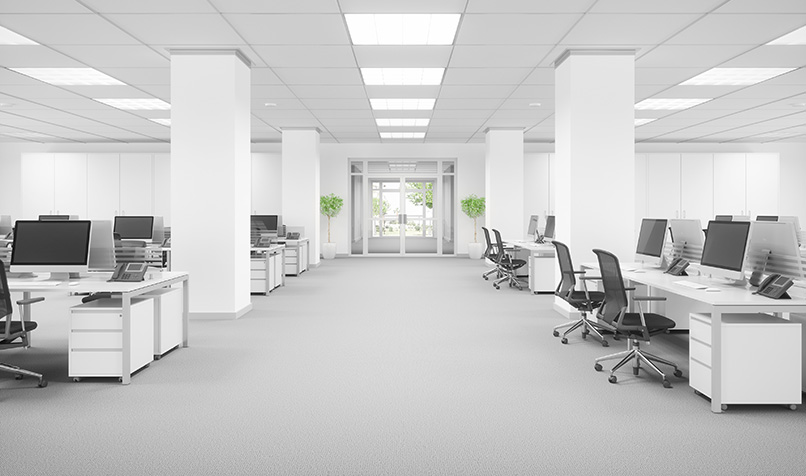Guest Blog-South Cities’ Office Vacancies Rise in H1 FY22 Despite High Net Absorption


With increased new office completions, the main southern cities are witnessing a rise in their office vacancy levels despite high net absorption. As per the latest ANAROCK data, Bengaluru, Hyderabad, and Chennai saw office vacancies increase by at least 4.2%, 3.9%, and 2.78% respectively in H1 FY22 as against the same period in H1 FY21.
Pune and Kolkata were the only top cities to see office vacancies decline marginally in this period.
Office Vacancies in South Cities:
- Hyderabad has the highest vacancy levels at 15.20% in H1 FY22 as against 11.30% a year ago. As much as 4.5 mn sq. ft. new office space was added in the city in H1 FY22
- In Bengaluru, office vacancy levels increased to 10.75% in H1 FY22 against 6.55% in H1 FY21. The city witnessed maximum new office completions in the period – approx. 7.3 mn sq. ft.
- Chennai saw the lowest vacancy levels at 10.40% in H1 FY22 as compared to 7.62% in H1 FY21. The city witnessed new office addition of 1.15 mn sq. ft. area in the first two quarters of the present fiscal year.
Prashant Thakur, Director & Head – Research, ANAROCK Group said, “Rising vacancies in the main southern cities can largely be attributed to increased new office space additions in the period. Altogether, the three cities saw new office space addition of 12.95 mn sq. ft. area in H1 FY22, accounting for nearly 58% share of the total new completions in top 7 cities (approx. 22.2 mn sq. ft.). However, despite this rise, the current office vacancy levels in the southern cities are still lower than in other top cities like NCR, MMR, and Kolkata.”
Demand-supply Dynamics
On analyzing the top 7 cities’ growth percentage in both new office supply and net absorption in H1 FY22 against the same period year ago, it emerges that NCR has done remarkably well. The NCR office market remained robust and saw a 320% increase in net absorption in H1 FY22 against the previous year. As much as 2.1 mn sq. ft. of commercial space was absorbed in the first two quarters of the ongoing financial year. It was second only to Bengaluru.
In terms of new office completions, NCR saw a close to 123% jump in H1 FY22 against the same period last year. As much as 3.9 mn sq. ft. area was added in the region in this period.
While Bengaluru witnessed the highest absorption of 3.2 mn sq. ft. in H1 FY22 among all the top 7 cities, it also saw a 6% reduction in net absorption as compared to H1 FY21. The net absorption in Hyderabad and Kolkata declined by 30% and 70% respectively in the same period.
Office Rentals
Average monthly rentals in the top 7 cities have remained steady at approx. INR 75/sq. ft. in H1 FY22 against the corresponding period in the preceding fiscal year. Interestingly, IT/ITeS hubs like Bengaluru, Hyderabad, and Pune saw a marginal rise of 3% each in average monthly office rentals in H1 FY22.
- In Bengaluru, avg. rentals increased to INR 79 per sq. ft. in H1 FY22 from INR 77 per sq. ft. in H1 FY21. Interestingly, when compared to the pre-pandemic period H1 FY20, the city saw a 7% jump in average monthly office rentals
- In Hyderabad, avg. rentals increased to INR 58 per sq. ft. in H1 FY22 from INR 56.5 per sq. ft. in H1 FY21 and INR 56 per sq. ft. pre-COVID-19 in H1 FY20.
- In Pune, the avg. monthly office rentals are INR 70 per sq. ft. as of H1 FY22. They stood at INR 68 per q. ft. in both H1 FY21 and H1 FY20
- In NCR and MMR, average rentals have largely maintained the status quo at INR 77 per sq. ft. and INR 125 per sq. ft. respectively.
The Rise of Coworking
In another notable trend, the demand for coworking spaces is on the rise. COVID-19 has clearly redefined the need for office spaces; businesses are heavily focused on cost optimization to tackle unprecedented crises such as lockdowns in the future. The cost advantage of coworking spaces clearly outstrips the possible risk factors.
Recent data indicates that of the net office absorption of 10.76 mn sq. ft. in H1 FY22 across the top 7 cities, the share of coworking has risen to 8%. In contrast, in H1 FY21, of net office absorption of 8.31 mn sq. ft., the share of coworking stood at 3%. Evidently, the pandemic has been a growth catalyst for the coworking sector, and this growth is likely to be manifold over the next 2-3 years.
About the author- Prashant Thakur, Director & Head – Research, ANAROCK Group
